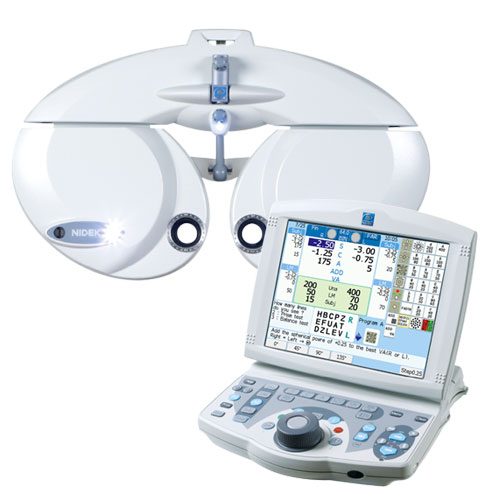 Rachel Tellez, OD, has been with Vision Source® since she started her career as an associate OD at one of the very first Vision Source practices in the San Antonio, Texas, area in 1990. Once she became a part of the Vision Source community, she says, it stuck with her, so when she opened her own location in 2003, she took advantage of all the benefits of membership for her new startup practice.
Rachel Tellez, OD, has been with Vision Source® since she started her career as an associate OD at one of the very first Vision Source practices in the San Antonio, Texas, area in 1990. Once she became a part of the Vision Source community, she says, it stuck with her, so when she opened her own location in 2003, she took advantage of all the benefits of membership for her new startup practice.
Since then, Dr. Tellez has moved her office into a newer location just a few hundred feet away, seen patients grow and bring in children of their own and added an associate OD. Something that has continually aided the practice’s growth, she says, has been the Marco technologies that bring efficiencies to the exam process.
For the first almost 30 years of her career, Dr. Tellez utilized an old-fashioned, bulky phoropter that required her to spend much of her days with her arms outstretched, spinning dials. Dr. Tellez—a regular at physical therapy with two bad shoulders— read about a piece of updated tech in an earlier issue of Vision Source OD magazine. A visit to The Exchange® in 2016, held in her hometown that year, solidified her decision to update her lanes with the Marco TRS-6100 Automated Refraction System with Infinity Remote Software.
“I only updated one lane and kept the old phoropter around in case we ever needed it,” Dr. Tellez says. “It didn’t take me long before I realized we needed the same equipment in our other two lanes. I was never going back.” Rather than relegating her other exam lanes to second-tier status because she didn’t want to use them, she added the Marco equipment to both. The advantages were immediate.
The wow factor
Patients who have been seeing Dr. Tellez for years are able to experience some of the high-tech instrumentation. Every patient sits at the Marco TRS, so they all appreciate the change from the stress of having to answer questions about clarity of numbers.

Faster refractions
With the process of obtaining the refractive correction more quickly, Dr. Tellez and the patient have more time to talk about other ocular health issues, the need for backup eyewear, dry eye treatments or other concerns the patient may have. Or the patient is able to get into the optical area faster to pick out their new eyewear.
More data, more quickly. With the OPD-Scan III Wavefront Aberrometer and the VisuALL virtual reality visual field perimeter, Dr. Tellez captures more information on each patient. The systems talk to each other, so staff members don’t have to load data manually. And Dr. Tellez has all the topography and perimetry data right on her screen. Since the VisuALL system is portable and allows the user to perform several tests without having to move the patient from one machine to another, that system has also sped up the data-gathering process. “Within a minute or less, the refraction, keratometry and topography are all on one screen, showing both eyes, much faster than compared to performing these tests with three separate instruments,” Dr. Tellez says. She easily can find results that are automatically saved onto a data card and then transferred into the TRS. “We don’t have to input the data manually, which increases accuracy and definitely saves time,” she says.
Patient choice
It’s challenging or any doctor to determine whether a small refractive change means that the patient “needs” new eyeglasses. The OPD screen features side-by-side comparisons so patients can compare their current prescription to the one she derived that day. This puts the decision on whether new eyewear is worth it in the patient’s hands. Even small refractive changes can make a big difference to some patients, and if they decide that’s the case, they feel great about buying new eyewear.
Short learning curve
Dr. Tellez says that technology mastery is not one of her strongest suits, but within 15 minutes of sitting down with her Marco representative, she felt confident with the technology and
what it could do. Patients also appreciate how easy it is.
Goodbye, shoulder pain
Dr. Tellez can operate the autorefraction system by tabletop console, so she can relax her body. The shoulder pain that bothered her has completely disappeared, she says.
Advanced technology not only makes patients more confident in the care they receive, Dr. Tellez says, but it also ensures she is giving her patients the most appropriate options. “These patients are getting a more in-depth exam, and it’s easier on me and my team,” Dr. Tellez says.
Hearing about the experiences that her colleagues have had with products and technologies from Elite vendors like Marco gave Dr. Tellez the push she needed to learn more. She’s grateful she listened and cannot imagine still practicing the way she did just a few years ago.
Article originally published in Vision Source OD magazine. Learn more about Vision Source here.


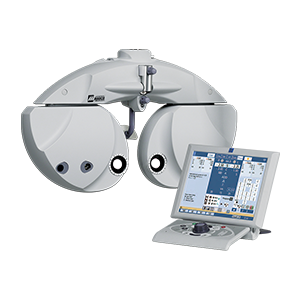
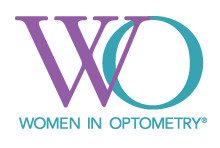
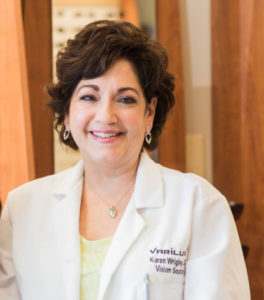 Karen Wrigley, OD, with two practices, Wrigley Eye Associates and Visual Eyes, in the Philadelphia, Pennsylvania, area, has always tried to keep her practices updated with the latest technology. Yet when she brought in new exam lane equipment from Marco recently, she was impressed by not only how it sped up the refraction and exam process but also by how much patients are enjoying the experience.
Karen Wrigley, OD, with two practices, Wrigley Eye Associates and Visual Eyes, in the Philadelphia, Pennsylvania, area, has always tried to keep her practices updated with the latest technology. Yet when she brought in new exam lane equipment from Marco recently, she was impressed by not only how it sped up the refraction and exam process but also by how much patients are enjoying the experience.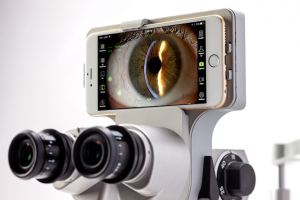
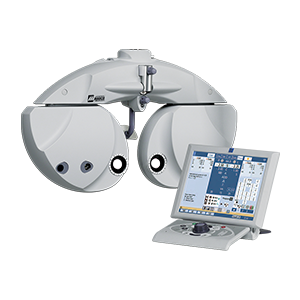 Dr. Wrigley has seen a positive return on investment and the intangible benefit of happier customers with the Marco systems. “Our vision statement at the practice is helping patients see well and look great. The new technology has helped us achieve this,” Dr. Wrigley says. “My goal is to always keep up and push forward.” She says her patients have even noticed the office updates. Those who have jumped to another practice for their eye care often come back to her because “they know we keep up with the latest and greatest in the industry,” she says. “It is so nice that they see what I’m trying to provide for them.”
Dr. Wrigley has seen a positive return on investment and the intangible benefit of happier customers with the Marco systems. “Our vision statement at the practice is helping patients see well and look great. The new technology has helped us achieve this,” Dr. Wrigley says. “My goal is to always keep up and push forward.” She says her patients have even noticed the office updates. Those who have jumped to another practice for their eye care often come back to her because “they know we keep up with the latest and greatest in the industry,” she says. “It is so nice that they see what I’m trying to provide for them.”
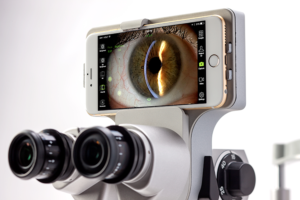 Best of all, she can conduct her exam with just as much personal attention – but at a great distance with the TRS and iON. “I’m able to sit further away than I could during earlier slit lamp examinations. Plus, it’s great for patient education,” she says. She can share the images with the patient and explain what she’s looking at, whether that’s blepharitis, dry eye, nevi or lid lesions. “It’s so much easier for the patient to understand what we can see when they look at the image. It helps show the value of what we do, especially when we can use the first day’s measures as a baseline and then show them the effectiveness of the treatment.”
Best of all, she can conduct her exam with just as much personal attention – but at a great distance with the TRS and iON. “I’m able to sit further away than I could during earlier slit lamp examinations. Plus, it’s great for patient education,” she says. She can share the images with the patient and explain what she’s looking at, whether that’s blepharitis, dry eye, nevi or lid lesions. “It’s so much easier for the patient to understand what we can see when they look at the image. It helps show the value of what we do, especially when we can use the first day’s measures as a baseline and then show them the effectiveness of the treatment.”
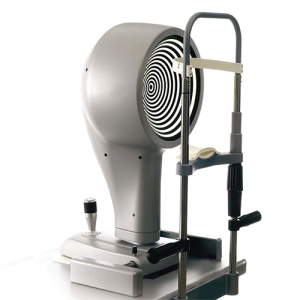

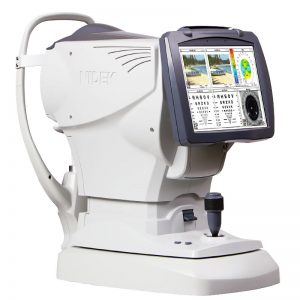 Adding the
Adding the 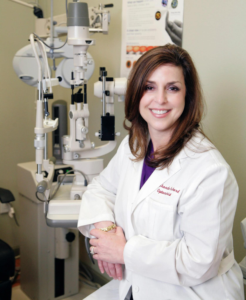
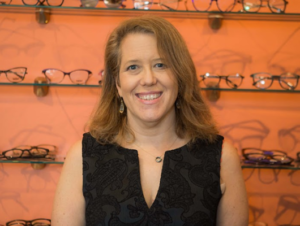 Dora Sudarsky, OD, had been considering the right time to equip a second exam room at her practice, Chroma Optics, in Burlington, Vermont. Her son will be graduating from optometry school in May 2021 and will join her in the office, so she knew the change was on the horizon. “I knew I needed to add another lane, and with COVID, I decided now was the time to do it,” Dr. Sudarsky says. She added a second
Dora Sudarsky, OD, had been considering the right time to equip a second exam room at her practice, Chroma Optics, in Burlington, Vermont. Her son will be graduating from optometry school in May 2021 and will join her in the office, so she knew the change was on the horizon. “I knew I needed to add another lane, and with COVID, I decided now was the time to do it,” Dr. Sudarsky says. She added a second 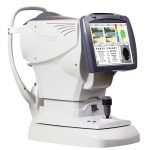
 The new ION Slit lamp in her exam room has become a great patient education tool in just a few months. “I can take pictures, put them on my computer screen and share with the patients.” Dr. Sudarsky was recently recommending a switch to wear daily disposable contact lenses to a patient. “I was trying to convince her, and with the picture, I could show her that her current contact lenses were dirty, even when she said they were clean. A picture is worth a thousand words.”
The new ION Slit lamp in her exam room has become a great patient education tool in just a few months. “I can take pictures, put them on my computer screen and share with the patients.” Dr. Sudarsky was recently recommending a switch to wear daily disposable contact lenses to a patient. “I was trying to convince her, and with the picture, I could show her that her current contact lenses were dirty, even when she said they were clean. A picture is worth a thousand words.” When Patricia Haller, OD, added Marco technology to her Chillicothe, Ohio, practice in 2015, physical distancing was not even a thought. But when she closed her office to routine care for four weeks during the stay-home orders in the state, she realized how this same technology allowed her to see emergency and urgent cases and still maintain some distance. Dr. Haller’s practice reopened at a lighter schedule to routine eye care in early May. She discovered that Marco was a “hidden gem” in the post-COVID era.
When Patricia Haller, OD, added Marco technology to her Chillicothe, Ohio, practice in 2015, physical distancing was not even a thought. But when she closed her office to routine care for four weeks during the stay-home orders in the state, she realized how this same technology allowed her to see emergency and urgent cases and still maintain some distance. Dr. Haller’s practice reopened at a lighter schedule to routine eye care in early May. She discovered that Marco was a “hidden gem” in the post-COVID era.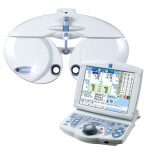 With the tabletop controller for her
With the tabletop controller for her 